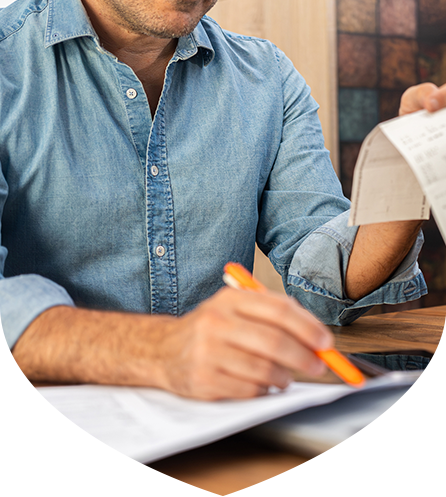Financial Wellness
Simple Steps to Save Money at the Gas Pump
When prices at the pump soar, fueling up is often one of the biggest household budget-busters. But there are ways to save money and get more drive time out of one tank. Even small savings add up.
Here are the do's and don'ts to save money on purchasing gas each time you pull up to the pump.
DOs:
- Fill up on Tuesdays. If possible, you might want to wait until Tuesday to fill your gas tank. That's the day the experts at GasBuddy report is the cheapest day to buy gas in Maryland, while Wednesday is the most expensive.
- Use an app. Your smartphone can help you find the best deal on gas.
- GasBuddy provides the lowest gas prices in your area. It's great for real time updates on prices and alerts on deals. It has over 400,000 reviews with 5 stars.
- GetUpside pays you to fill up. That's right, you earn cash back with every fill-up at a participating gas station.
- Waze, often used for directions, also includes a gas feature. It won't show you the best price, but it will show which stations are nearby and their prices.
- Gas Guru provides cheapest gas prices straight from the Oil Price Information Service (OPIS), the world's most comprehensive source for petroleum pricing. It shows nearby gas prices with easy to read maps so you can zero in on savings.
- AAA's Triptik®Travel Planner is now free and provides information about gas stations and prices, as well as directions and maps.
- Open a rewards credit card. Get rewards—or even better, cash back—every time you fill up using your card. Just be sure to pay your bill off in full every month to avoid interest charges.
- Buy gas at a warehouse club. Shoppers clubs such as Costco, BJ's and Sam's Club sell gas to members. It is often—though not always—among the lowest-priced gas in town. This option especially makes sense for shoppers who know they will visit or drive by their warehouse club at least once weekly.
- Take advantage of grocery store fuel programs. Some grocery stores reward their shoppers with fuel perks programs that can cut the cost of your fill-ups. If you never bothered to explore this option, now may be the time to do so. Often, shoppers earn one fuel point for every $1 spent. Some stores offer twice the points when you purchase gift cards.
- Plan ahead. Plan your driving and combine errands to economize trips and stops. Several short trips, each one taken from a cold start, can use twice as much fuel as one trip covering the same distance when the engine is warm.
DONTs:
- Don't accelerate quickly or brake hard. A lot more fuel is used when drivers rapidly accelerate or decelerate. Aggressive driving can lower your highway gas mileage by 15% to 30% and your city mileage by 10% to 40%. Learning to avoid these maneuvers can significantly reduce the amount of gas you use, which, in turn, requires fewer trips to the pump.
Other driving tips to reduce gas consumption:
- Easy, smooth on to the gas; easy, smooth off the gas.
- Same thing with braking and handling.
- Reduce speed. (One of the easiest and most efficient ways to reduce fuel consumption.)
- Avoid idling by turning off your engine when your vehicle is parked for more than 10 seconds.
- Remove excess weight. An extra 100 pounds in your vehicle could increase your gas costs by up to $.03 cents per gallon.
- Don't delay regular auto maintenance to avoid fuel economy problems due to worn spark plugs, dragging brakes, sagging belts, low transmission fluid or transmission problems. Fixing a serious maintenance problem, such as a faulty oxygen sensor, can improve mileage by as much as 40%.
- Ensure proper tire pressure and alignment. Cars built after 2007 have systems that monitor tire pressure. But for older cars or faulty pressure sensors, check pressure regularly.
Also, if your car is driving differently, which includes vibrating or pulling to one side, it may need a realignment. This helps with the longevity of the tires, wearing of the front-end components and fuel economy.
- Don't drive with the windows down. A common misconception is that turning off the air conditioning and rolling down the windows saves gas consumption. The fact of the matter is that air moving inside and around the car causes wind resistance and lowers fuel economy.
- Don't buy premium gas unless it's required. Unless your car must use plus or premium gasoline, stick with regular gas. Many cars that call for premium gas can run on regular because their computer systems can adjust to the lower octane fuel.
The American Automobile Association (AAA) reports that drivers collectively waste over $2 billion per year on high-octane gas. In other words, they paid extra for premium gas even though it wasn't required or even recommended for their cars.
These top tips for saving money at the pump can go a long way at reducing a drain on your household budget. Be smart with your money by following these gas and money saving suggestions—and be sure to check out our Financial Know-How page for more savings tips.
Resources: American Automobile Association, WTOP News, MoneyTalksNews, GetUpside.com, GasBuddy LLC, Good Morning America, the U.S. Department of Energy
Save with peace of mind
With short and long-term solutions, dollar by dollar you can begin building a brighter future.


